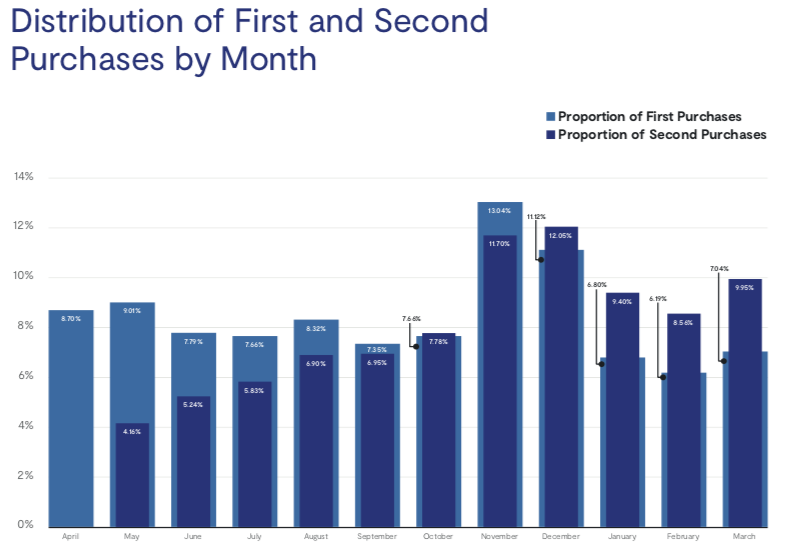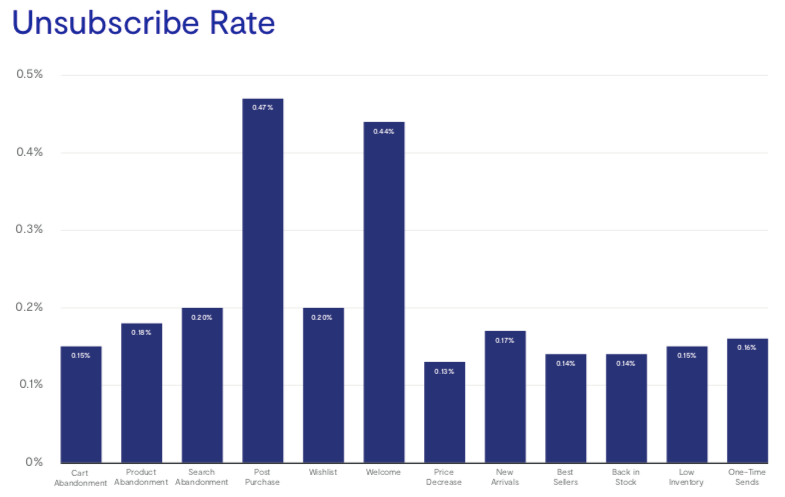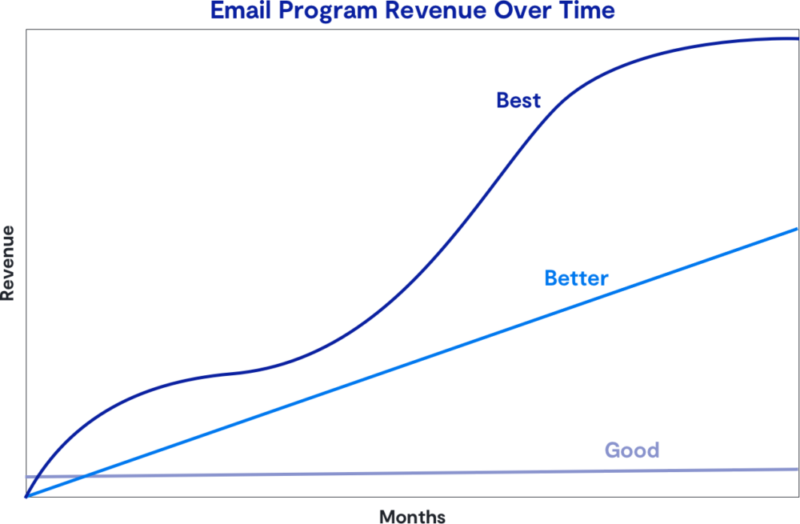
Email Marketing Success: Long Term Views Deliver Long Term Returns
There are many ways to define the success of your email marketing program, but no matter what you measure, you need to take a long term view.
It’s easy to get caught up in the success of a single campaign or even a single email. And while those are good signals to understand, they don’t always indicate the performance of the overall email marketing program over a sustained period of time.
When it comes to understanding the true impact of email’s ability to drive revenue for your brand and engage customers regularly over time, the long term view matters most.
3 Reasons Email Marketing Programs Require a Long Term View
Taking a long term view when evaluating your email marketing program is essential because it challenges you to be clear on the economic goals of your full email program and not look at every minor setback as proof that your program isn’t performing. On top of that, the inverse — taking a short term view — can prove damaging for your program. Here are three reasons why that’s the case.
1) External factors, including the season and economy, impact retail
The tides of the retail industry rely heavily on both the time of year (is there a major holiday this season?) and the health of the economy (do consumers feel comfortable spending money?). This combination results in significant ebbs and flows over the course of time.
For example, from one quarter to the next, email engagement and overall purchase behavior will likely change due to the presence (or lack of) seasonal shopping events like back-to-school, Black Friday and even Prime Day. These differences mean that comparing email engagement from one month to the next is not always an apples-to-apples comparison. Looking at the distribution of first and second purchases by month highlights this trend, particularly when it comes to acquiring new customers.

On top of these seasonal trends, the health of the economy also has a major impact on consumers’ willingness to spend money. As a result, a dip in performance from one holiday season to the next may not actually be a reflection of your email marketing program, but rather a reflection of the economy.
Taking a long term view and staying aware of these external factors can help you balance out these ebbs and flows to truly understand email marketing performance. This view is important so that you don’t try to make changes to your program to correct outcomes over which you have little-to-no control.
2) Short term wins don’t always deliver long term results
In some cases, isolated performance signals can be misleading — delivering short term wins that actually hurt results in the long term.
Consider a finding from Bluecore’s 2019 Retail Email Benchmark Report, which uncovered disproportionately high unsubscribe rates for post purchase and welcome emails. The higher-than-average unsubscribe rates for these emails stem from shoppers who subscribe to receive a discount and then promptly unsubscribe after using that discount.

Diving deeper, this situation creates problems for brands because even though promotions may help increase email signups, they significantly shrink margins. Further, if they lead to shoppers who subscribe, buy once and promptly unsubscribe (which the data reveals they do), then this short term win doesn’t actually deliver any long term growth. In fact, it makes the squeeze on margins even more painful to the business. For your email program, this behavior is akin to taking one step forward and two steps back.
Taking a long term view can help mitigate this problem, as it will reveal any patterns in which shoppers sign up for emails and then immediately unsubscribe, which would call for a change in email capture strategy. In this case, instead of using promotions as a crutch, your team can think through how to add value for shoppers by improving relevance with personalized product recommendations and by adding non-promotional messaging (e.g. highlighting brand values and/or how to best enjoy certain products).
3) Growth and maturity over time should inform program investments
The most successful and fastest growing email programs take a cost vs. reward mindset in which they regularly re-invest returns back into the email program. However the only way to do this effectively and realize compounding growth is to take a long term view.
For instance, if you take a short term view of your email marketing program by either capping your investment at the start of each year or pulling back money based on a slight dip in performance one month (which could be due to external factors), that only serves to limit the potential growth of your program.
Instead, you need to take a long term view by looking at month-over-month data in the larger context of annualized attributed revenue growth. By doing so, you can create a strong foundation to re-invest your returns and foster a program that grows revenue in a non-linear way. This non-linear revenue growth is the gold standard of email performance because it represents a high-performing email program that regularly engages new and existing shoppers.

What Trends in Your Email Marketing Program Will a Long Term View Uncover?
Once you start evaluating your email marketing program with a long term view, what trends will you uncover? And how will they compare to industry standards? Download Bluecore’s 2019 Retail Email Benchmark Report to find out.




